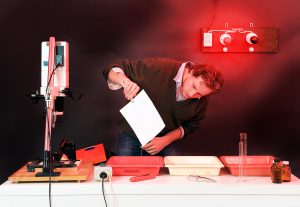
Who Created The First Light Emitting Diode?
- Post author:cs_Admin
- Post published:4 June 2024
- Post category:Blog
- Post comments:0 Comments
An astonishing trend in the world of technology, but particularly in the field of lighting technology, is how so many of the most pivotal, world-changing components in history are often derided as lacking any practical uses.
Probably the most extreme example of this in the modern lighting world is the light-emitting diode, a pivotal part of bright energy-saving tube lights, as well as the vast majority of electronic displays available on the market today.
However, it took nearly half a century from the discovery of electroluminescence, the physical concept that makes it function, and the sale of the first practical LEDs, and even then it would take until the 21st century for efficient white LEDs to exist and make LED lights practical.
The first step in this process was the construction of the LED itself, which is thanks to the unsung work of Russian scientist Oleg Losev.
A largely self-taught scientist from a noble Tver family whose education was affected by the Bolshevik Revolution, Mr Losev was a remarkable innovator, working on some of the world’s first semiconductors, worked on crystal radios before the popularity of vacuum tubes, and developed the first working LEDs.
When Henry Joseph Round of Marconi discovered the concept, it was a brief footnote in a larger report about the phenomena, because the light effect was so slight due to the silicon carbide semiconductor that had been used by Mr Round.
Mr Losev took the concept further, and established a theory of how it worked and its potential applications in the future, publishing these details in a Soviet journal in Russian.
The problem was that by using silicon carbide, even his practical light source produced only the weakest green lights, and was ignored by everyone other than him.
Tragically, his discoveries were overlooked and lost. When the radio laboratory in Nizhny Novgorod shut down, he moved to Leningrad’s (now St Petersburg) Central Radio Laboratory, where he worked as a technician and even received a PhD, but ultimately never received the accolades he deserved for his pioneering work.
His life, like over a million others in Leningrad, would end during the Second World War due to the Siege of Leningrad, succumbing to starvation amidst the wreckage of the city during an 872-day siege.
His achievements were only given the credit they deserve in 2007, and the modern LED lights used today owe a lot to Oleg Losev.



